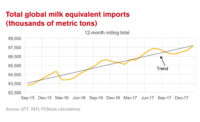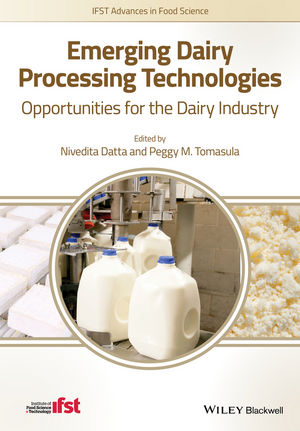Christmas was a dim but pleasant memory until the credit card statement arrived this month. Looking at those charges dredged up memories of The Great UPS Delivery Fiasco of 2013. It was in all the headlines, but in case you missed it, here’s the re-cap: UPS did not delivery some presents by Dec. 25, throwing entire households into despair and ruining the holiday for everyone. Or so I’ve been told. My wife and I spent our holiday dollars on travel.
I started thinking about how this UPS flap and other headline-making current events (Target, Edward Snowden and the Super Bowl) might hold a lesson or two for the dairy industry. Here goes:
At its core, the UPS story shows the importance of distribution. All of those e-tailers depended on third parties to ship goods to buyers. Every business needs a reliable distribution system. No matter how effective and efficient the manufacturing is, and no matter how innovative or affordable a product is, you have to get your product to market on a timely and orderly basis. Otherwise, you are just manufacturing inventory. Dairies can operate their own distribution networks but it is probably better to farm it out to a company with special expertise. Your expertise is in dairy foods manufacturing, not logistics.
Disgruntled shoppers picked up their megaphones — I mean smart phones — and blasted UPS on social media. Twitter and Facebook have changed the rules of engagement when it comes to customer service. What’s the lesson here? Be ready to respond. Woe to the brand that does not have a crisis management plan. Are you ready if a food recall hits your company?
Consumers changing channels
What the UPS episode also teaches is this: Shoppers who bought from local stores did not disappoint their gift recipients. Put another way: there is more than one place to shop for gifts. This should sound familiar to any milk processor. You have to place your foods and beverages in channels other than the traditional grocery store. Drug stores, convenience stores, dollar stores, club stores and specialty retailers are selling milk (and cheese and yogurt and ice cream). Shoppers’ buying habits have changed and they also have more options. Amazon offers a home-delivery grocery service.
These changes apply to prepared foods and meals as well. The c-store chain 7-11 is offering more fresh foods and adding meals-to-go. As the Chicago Tribune noted in a news article in January, convenience stores are moving from snacks to meals while restaurants are adding snacks to their menus. What all this means to you, the dairy processor, is that you need to develop foods and beverages that are appropriate for each channel. One size or format will not fit all.
Getting back to Christmas shoppers: Gift givers who bought from local merchants not only had gifts to give on Christmas Day (because they were the retailers’ distribution system), but also these shoppers were supporting neighborhood business owners. “Buying local” should resonate especially well with the artisan cheesemakers who are reading this. Shortening the time from farm to table, “know your farmer” and supporting local producers are strong trends in dairy foods and among some consumer segments.
Privacy, please
If UPS didn’t ruin your holiday, perhaps Target did. Hackers broke into the retailer’s servers and walked out with private data about shoppers. Trust between a brand and its consumers is vital. Trust can build loyalty. Loyalty builds repeat business. It’s cheaper to retain a customer than acquire one. Break that bond of trust and you’ve lost a customer. You learned these platitudes and B-school beatitudes long ago.
As it turns out, data about our personal lives already had been compromised by our very own Uncle Sam. Edward Snowden, considered by some a whistleblower and by others a traitor, revealed that secret (and more). Your marketing and advertising people have to be very careful with what they extract from the data mines they labor in. Go ahead and create messages that resonate with the consumers you seek, but don’t drill down so deep into the data that you strike a nerve and creep them out.
The last headline is about the Super Bowl. I am going out on a limb now because I write this before the game has been played. The applicable lesson that the NFL teaches is: Teamwork (not one individual) wins the game. There is no “I” in dairy. Oh wait, yes there is. What I meant to say is that winning dairy processing companies comprise creative food scientists, safety-minded manufacturing specialists, and customer-service-focused sales and marketing teams all working in unison.
Keep reading the headlines and consider what you can learn from them. As dear old Dad used to say: I’ll see you in the funny papers.







